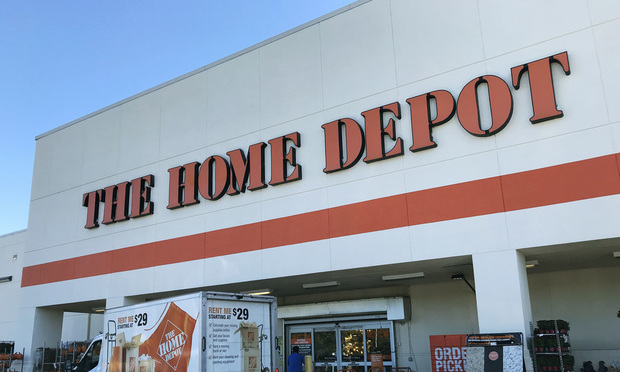Analysis brought to you by the experts at FC&S Online, the unquestioned authority on insurance coverage interpretation and analysis for the P&C industry. To find out more, visit www.nationalunderwriter.com/FCS
In the 1980s, the Police sang about synchronicity: “Effect without a cause…Sub-atomic laws, scientific pause….”
Psychologist Carl Jung offered a better explanation of the concept, stating that synchronicity describes events that are meaningful coincidences if they occur without a causal relationship.
In determining coverage for insurance disputes over the wording “arising out of,” however, synchronicity won't do. As the following recent court decisions demonstrate, there must be a causal relationship between the loss and the risk from which it arises.
Trip and fall
For example, in Chappaqua Cent. School Dist. v. Philadelphia Indem. Ins. Co., [148 A.D.3d 980 (2017)], a New York court ruled on a case involving personal injury and leased premises.
Patricia Brunsting was employed by Chappaqua Children's Workshop, Inc., which operated an after-school program in the cafeteria of the Robert E. Bell Middle School that it leased from the owner, the Chappaqua Central School District. She was injured when she tripped and fell while descending an exterior staircase from the school to the parking lot. The Workshop had a liability policy with Philadelphia Indemnity.
Philadelphia claimed there was no coverage for the school district, which was an additional insured on the Workshop's policy, because Brunsting was not injured on the leased property and the stairway was not necessarily incidental to the use of the leased premises.
The school district claimed that the wording on the policy covering “liability arising out of the ownership, maintenance or use of that part of the premises leased or rented to you” included the broad, comprehensive term “arising out of.”
The court stated that the term “arising out of” requires only a causal relationship between the injury and the risk for which insurance coverage is provided in determining coverage for an additional insured. Because the Workshop rented only the cafeteria, the court ruled that there was no causal relationship between the injury and the leased premises, so no coverage applied.
Related: Game of drones: Liability and insurance coverage issues coming

When determining coverage for claims, courts look at the causal relationship between the risk and the loss. (Photo: Shutterstock)
Business exclusion
Likewise, the court found no coverage applied in Vermont Mutual Ins. Co. v. Samson (D. Conn. March 20, 2017), but this time because there was a causal relationship between the injury and a policy exclusion.
Vermont issued a homeowners policy to Paul and Debra Samson with an exclusion for bodily injury arising out of or in connection with a business. The policy carried an endorsement that also excluded liability coverage for business activities of the insureds. The insureds stated in the insurance application that they did not conduct business on the premises or keep animals on the premises.
Matthew Herbert alleged that when he went to pick up his child at the Samsons' daycare, their dog bit him and caused serious injuries. He sought coverage for his injuries, for which a court awarded him $125,000, from Vermont Mutual.
The parties did not agree on whether the injury arose out of or in connection with the daycare business.
The court stated that Connecticut interprets the “arising out of” language broadly, and “the nexus between an accident, loss or injury is found to exist when it 'was connected with,' 'had its origins in,' 'grew out of,' 'flowed from,' or 'was incident to' the excluded use or activity.” Direct proximate causal connection is not required, but there must be some causal relation or connection. In this instance, the court found that the injury was incident to a business activity in that Herbert was invited into the home to pick up his child from the business, and the policy excluded coverage.
Related: Airport's 'parachute jumping' policy exclusion leaves injured thrill-seeker without coverage 
Under New York law, if a loss involves a named insured's employee who is injured while working for the employer, there is coverage. (Photo: Shutterstock)
Workplace injury
In Arch Specialty Ins. Co. v. Farm Family Cas. Ins. Co. (S.D. N.Y. March 3, 2017), the court found that coverage did exist due to the causal relationship between an injury and the injury occurring at the workplace.
Mastercraft had a contract with Mega, a general contractor, making Mastercraft the masonry subcontractor at the construction site, stating that Mastercraft assumed entire responsibility and liability for any and all damages for injury or damage arising out of or occurring in connection with the execution of all the masonry work as per the scope of work attached to the contract.
Mastercraft was required to obtain and carry commercial general liability (CGL) coverage naming Mega and the other indemnitees as additional insureds. Mastercraft obtained the policy from Farm Family.
Joseph Giampa, an employee of Mastercraft Masonry, was injured on the job site and sued his employer for negligence and violations of New York labor law and Industrial Code rules. Farm Family argued that Giampa had not officially started working at the time of the injury but was walking to the site before his scheduled start time, so he was not injured as a result of his actual employment.
The court, however, said that it is clear that employees must enter and leave the site in connection with their shifts. The court pointed out that New York courts have held that “arising out of” is ordinarily understood to mean incident to, having connection with, or originating from — there must be some causal relationship between the injury and the risk. The court found that under New York law, if a loss involves a named insured's employee who is injured while performing the named insured's work, the connection is sufficient to trigger an additional insured arising out of operations endorsement, regardless of fault.
The court found that the parties were additional insureds on the policy and that Farm Family was obligated to defend and indemnify them with respect to Giampa's underlying suit.
The “arising out of” language can cause some headaches in insurance coverage disputes. Whether a loss is covered hinges on more than a chance, synchronistic coincidence, but it must show a causal relationship between the risk and the loss.
Susan Massmann, CPCU, is managing editor of electronic publications for the reference division of ALM, the parent company of PropertyCasualty360.com. Email her at [email protected].
Want to continue reading?
Become a Free PropertyCasualty360 Digital Reader
Your access to unlimited PropertyCasualty360 content isn’t changing.
Once you are an ALM digital member, you’ll receive:
- Breaking insurance news and analysis, on-site and via our newsletters and custom alerts
- Weekly Insurance Speak podcast featuring exclusive interviews with industry leaders
- Educational webcasts, white papers, and ebooks from industry thought leaders
- Critical converage of the employee benefits and financial advisory markets on our other ALM sites, BenefitsPRO and ThinkAdvisor
Already have an account? Sign In Now
© 2025 ALM Global, LLC, All Rights Reserved. Request academic re-use from www.copyright.com. All other uses, submit a request to [email protected]. For more information visit Asset & Logo Licensing.








